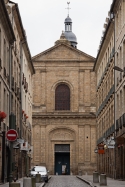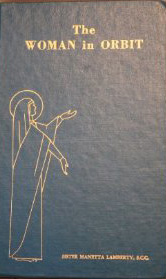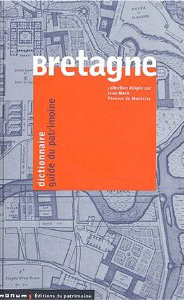Strict Standards: Declaration of McalendarControllerMCalendar::display() should be compatible with McalendarController::display($cachable = false, $urlparams = false) in /home/nrnvguvu78sn/public_html/components/com_mcalendar/controllers/mcalendar.php on line 0
Strict Standards: Only variables should be passed by reference in /home/nrnvguvu78sn/public_html/components/com_mcalendar/controllers/mcalendar.php on line 22
Strict Standards: Only variables should be passed by reference in /home/nrnvguvu78sn/public_html/components/com_mcalendar/controllers/mcalendar.php on line 23
Strict Standards: Only variables should be passed by reference in /home/nrnvguvu78sn/public_html/components/com_mcalendar/controllers/mcalendar.php on line 24
Strict Standards: Only variables should be passed by reference in /home/nrnvguvu78sn/public_html/components/com_mcalendar/controllers/mcalendar.php on line 25
Strict Standards: Only variables should be passed by reference in /home/nrnvguvu78sn/public_html/components/com_mcalendar/controllers/mcalendar.php on line 26
Notice: Undefined property: stdClass::$name in /home/nrnvguvu78sn/public_html/components/com_mcalendar/models/shrines.php on line 17
Related Books
Notre-Dame des Miracles et Vertus
Notice: Undefined property: stdClass::$state in /home/nrnvguvu78sn/public_html/components/com_mcalendar/views/detail/tmpl/default.php on line 95
Rennes, France (14th cent.)
Commemorated on November 3

The statue of Our Lady of Miracles and Virtues, often simply called Our Lady of Miracles, is a depiction of Virgin and Child. Installed in 1876, it replaces the original statue venerated since the fourteenth century and destroyed during the French Revolution.
The original statue was first mentioned in the fourteenth century , as part of a miracle that would have occurred during a siege of the city. It is already a Virgin and Child painted wood. It is painted in 1445, and his hands were restored in 1522. In 1658, the father Fautrel describes it as:
"And to say something in particular [the image of the Virgin of] Saint-Sauveur, it is only a simple wood that was enrichy some gilding, more for its conservation, its beautification . It is true that its shape feels its antiquity, but, after all, save certain air of devotion to it notes, she did nothing extraordinary, and it is a seated figure & medium size, which takes its Christ on her lap, gently supporting the left hand for what is the right hand, which she had previously placed on the breast, that tradition tells us, she sees, now detached showing directly, his first three fingers, instead of mine (who is toward the center, away from ten to twelve steps), there being no appearance that have been carved out of, but in memory of the miracle, it remained so."
- Georges Fautrel, The History of Our Lady of Miracles, honored in Rennes in the church of Saint-Sauveur
History
Four stories of miracles
According to popular tradition there was a famous miracle attributed to Our Lady at Rennes during the War of Succession at Brittany. As Rennes was being besieged by the invading English army under the Duke of Lancaster, the people of the city expected the English forces to mine their way under the walls into the city.
On the night of February 8, 1357, the church bells began to ring of their own accord, and the candles were spontaneously lit. The statue of Our Lady, known as Our Lady of Miracles and Virtues, pointed out a particular slab in the church. The inhabitants of the city thus were alerted to the mine and the point of the English attack, and were able to repulse the invasion. The miracle was a popular subject for ballads, especially the troubadour Cuvelier. In 1634 the miracle was officially recognized by the Bishop of Rennes, Pierre Cornulier
During the war of succession of Brittany , while Rennes was besieged by the British troops, the city expected an attempted invasion by an underground path. According to popular tradition, the night of 8 February 1357 , the church bells began to ring and candles were lit spontaneously. The defenders of the city would then discovered the statue of Our Lady designating a slab on grade. Digging at the site, they discovered a gallery breakthrough by British troops from taking the city and drove the invasion .
Few distinct narratives of this event and its date is known varies. According to some historians, it is the seat of Rennes to in 1356 - one thousand three hundred and fifty-seven and the discovery of the mine is to be attributed to a trick of the governor of the city, William Penhoët, which helped alert defenders and locate the gallery.
The only contemporary account of the facts (before 1387) is the song of Bertrand du Guesclin the troubadour Cuvelier . This song gesture whose objectivity is discussed does not describe the scheme of William Penhoët and evokes no miracle.
The following story is found in the 1532 edition of The Chronicles of Britain 's Alain Bouchart . It is the miracle in 1343 and cites the ringing of bells and the lighting of the candles, but not the movement of the statue.
In 1634, the miracle is officially recognized by the Bishop of Rennes, Mgr Pierre Cornulier . The minutes of this recognition is lost, but it is picked up by a report of 19 July 1658 of Bishop Henri de La Mothe-Houdancourt his successor . The indicated year is 1345, three facts are cited.
In 1637, Father Albert the Great recounts the lives of the saints of Brittany Brittany a slightly different story , in which the sexton discovered the statue and prevents defenders in 1356 this time.
Finally, a story in verse, anonymous and undated, is taken by the father Fautrel in his History of Our Lady of Miracles in 1658 . This poem advance the date of February 1345 and cites three facts.
Later editions of the lives of Saints Brittany Brittany resume the story of the father Fautrel.
Fire of 1720
During the fire of 1720 , despite the collapse of the roof and the destruction of some of the furniture, the same statue was found intact. The people assigned to the Virgin to stop the fire. The residents of the Strings, saved, did paint a votive offering to Our Lady. The watercolor original 1721 signed Huguet, is located in the Notre-Dame-de-Bonne-Nouvelle . An expansion directed by Leroy and hung indefinitely, is located in the south aisle of St-Sauveur. Its frame is marked "Vow to ND is good news for residents of Strings, Rue St Louis, St Michel, Place Ste Anne, preserved the fire of December 22 to 30 " .
Healing of Mary Richelot - February 18, 1742
An anonymous record relates the instantaneous healing of Mary Richelot during a Mass on 18 February 1742 . The woman suffered left knee since 20 September 1738 . His ex-voto, a table representing that has been preserved.
An anonymous record relates the instantaneous healing of Mary Richelot during a Mass on 18 February 1742 . The woman suffered left knee since 20 September 1738 . His ex-voto, a table representing that has been preserved.
Healing Magdeleine Morice in 1761
There are many miracles attributed to Our Lady, including the miraculous healing of Magdalene Morice in the year 1761. She had gangrene in her right foot which was instantly healed on Easter Sunday. Records of proceedings of the General of the parish mention instant healing Magdeleine Morice, experiecing gangrene in her right foot during a Mass on Wednesday, Easter 1761. A report prepared at the request of the applicant is kept in the archives of Porcaro.
Description
In 1684 a boy of eleven left home for the city of Rennes in hopes of enrolling at the Jesuit College of Thomas a Becket. The young Louis-Marie was an intelligent boy who was taken under the guidance of the Jesuit priests, and it was at Rennes that he began to consider a possible vocation to the priesthood. It was here at the shrine of Our Lady at Rennes that Saint Louis de Montfort made the final decision to become a priest.
The fire of 1720 destroyed part of the church being rebuilt but saving the statue. It was transported to the chapel des Augustins (now Theatre du Vieux Saint-Étienne ) until its return to Saint-Sauveur in 1731.
The fire of 1720 destroyed part of the church being rebuilt but saving the statue. It was transported to the chapel des Augustins (now Theatre du Vieux Saint-Étienne ) until its return to Saint-Sauveur in 1731.
The statue was destroyed in the Revolution. The statue of Our Lady of Miracles and Virtues currently displayed at the basilica was placed there in February of 1876 on the initiative and funds of Father Lelièvre. The new statue, by Rennes sculptor Charles-Pierre Goupil, is made of wood and stone in the Romanesque Revival style.
Canon Louis Company made the following description of the statue:
"The Virgin is seated in majesty.Her shoulders are covered with a coat azure color and his head with a white veil, surmounted by a crown with elegant jewels, decorated with precious stones. The blue dress is half hidden by a peplum , red light, finished with a rich embroidery. The feet of the Virgin are shod with red slippers enhanced in the middle of a golden braid. The left hand supports the Virgin and Child Jesus. The right hand is lowered. The index is heading towards the earth, following the traditional left.
The Child God rests on the lap of his mother. His head is surrounded by circular and cruciform nimbus. Her feet are bare. These two attributes remind his divinity, according to the rules of iconography. The right hand, he blessed the Latin way. From the left, it supports an open book on his knees and with a text of the Magnificat: Fecit mihi magna which is potens and nomen sanctum jus. "
- Louis Company, Our Lady of Miracles and Virtues - Its history - His Worship
Approval
Bishop Henri de La Mothe-Houdancourt (Bishop of Rennes) Permission given by Bishop La Mothe-Houdancourt devotion practiced at the altar and the image of Our Lady in the church of Saint-Sauveur, 19 July 1658, Departmental Archives of Ille-et-Vilaine (G 545).
Clement X, issued a papal bull granting indulgences to the Brotherhood of Our Lady of Miracles and Virtues, July 13, 1670.
Benedict XV , Apostolic Brief Rhedonensi in Urbe, April 27, 1916
Erection minor basilica of St. Saviour Church and Our Lady of Virtues, in Rennes.
Shrines

Basilique Saint-Sauveur de Rennes (Rennes, France)
The Basilica of Saint-Sauveur Rennes is a minor basilica of the Roman Catholic Church, under the paronage of Our Lady of Miracles and Virtues. The cult of Our Lady is imp...



